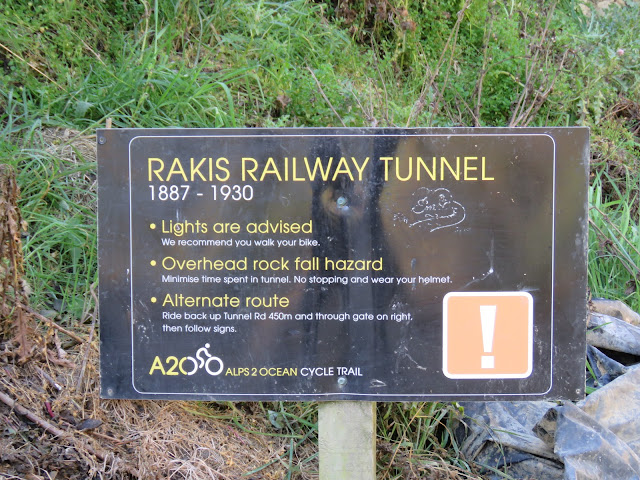Returning from a work trip up the Waitaki Valley I decided to take a short detour to explore the Rakis Tunnel.
The Rakis Tunnel is one of two tunnels on the former Tokarahi Branch. The Tokarahi Branch left the Ngapara Branch at Windsor. Construction of the 19.22 branch started in June 1879 and was opened for traffic in July 1887. The branch had a short life and closed in July 1930.
Above the tunnel is the significant flat top feature called the Rakis Table. The Rakis Table is made of Raki Siltstone deposited around 42 million years ago when this area was underwater. The tunnel is named after this feature.
The tunnel is about 100 metres long with a curve in the middle so there is very little light in the middle of the tunnel. I would highly recommend bringing a torch or head lamp.
Rakis Tunnel is easily accessible and is now part of the Alps to Ocean Cycle Trail.
If you don't want to bike the over 300 km's from Aoraki Mount Cook Village to Oamaru to visit the tunnel you can drive to the carpark located on Tunnel Road. The carpark is marked by an Alps to Ocean Cycle Trail sign.
 |
Alps to Ocean Cycle Trail sign at the carpark on Tunnel Road. |
Approach to the western portal of the Rakis Tunnel.
At the western portal is a small Alps to Ocean sign with the name of the railway tunnel, its years of service and due to the nature of the tunnel that lights are recommended and that there is an overhead rock fall hazard.
A2O sign at the western portal of the Rakis Tunnel.
Both portals of the tunnel are constructed of local sand stone.
Internal detail of the tunnel walls and ceiling.
At about the middle of the tunnel is a niche built into the northern side. railsystem.net defines a niche as 'an area / adit off the main tunnel used for emergency supplies'. I'm not sure the tunnel is quite long enough that it required emergency supplies but was probably constructed for workers to quickly move out of the if caught in the tunnel when a train approached.
The recess in the northern side of the tunnel.













No comments:
Post a Comment